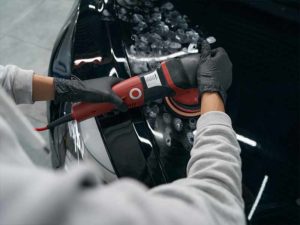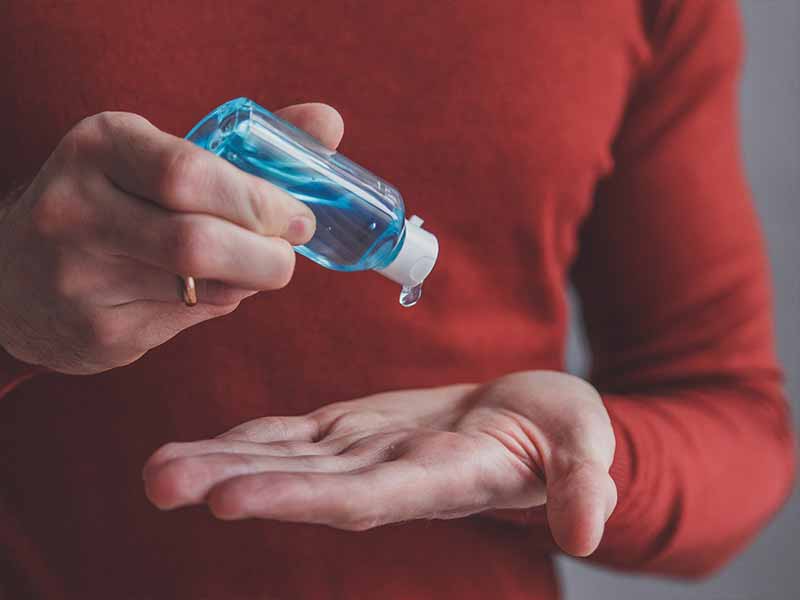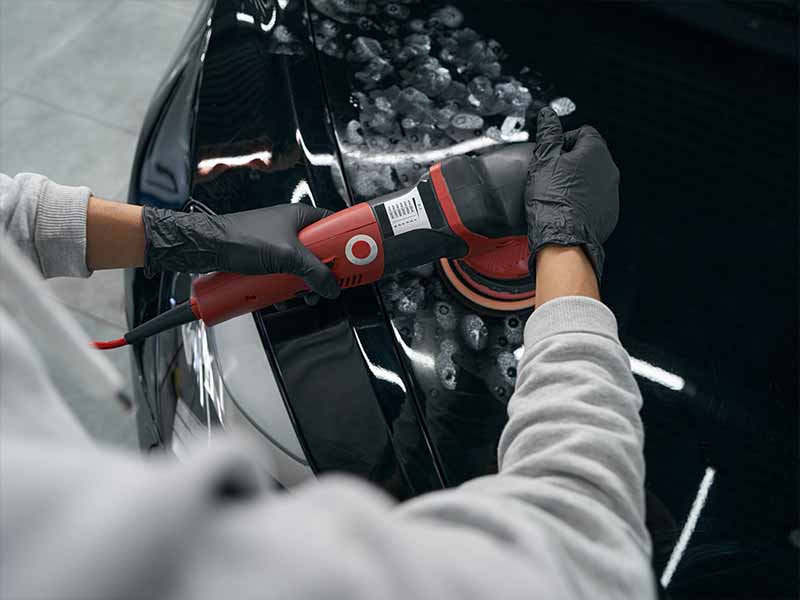Table of Contents
- Glaze Vs Sealant
- Introduction to Glaze
- Introduction to Sealants
- The Typical User for Glazes and Sealants
- What to Do Before Applying a Sealant
- What to Do Before Applying a Glaze
- How to Correctly Apply Glaze or Sealant
- Differences Between Glaze and Sealant
- Similarities Between Glaze and Sealant
- Helpful Links
- Conclusion
As you grow your collection of detailing products, you will stumble across the option to buy a glaze or sealant. It’s easy to misunderstand what these products can do, but they’re both very viable options when it comes to upkeeping your car and keeping it looking nice.
In this guide, we’ll be talking about glazes and sealants. More specifically, we’ll discuss both types of products, how they work, which is right for you, and the similarities and differences between glazes vs sealants.
Glaze Vs Sealant
Glaze is a product that helps hide light scratches and gives a wet look. It is applied before wax or sealant.
Sealant is a durable paint protection coating that can be applied over a glaze.
Introduction to Glaze
First, let’s talk about glazes. For DIY detailers, glazes aren’t the most common product, but they’re very useful.
What Is a Glaze?
A glaze is a product that applies a quick shine to your vehicle. It’s a short-term way to add a sheen and can typically be used right before a show.
If you choose a glaze with microfillers in it, you can use the product to hide minor imperfections like scratches and swirls while enhancing the depth of your paint.
A glaze can be thought of as a temporary polish. You won’t use an orbital buffer to apply it, but it still gives some temporary advantages that can be compared to using a polishing agent with a polisher.
That means that it’s a lot quicker to apply and still gives good results for a short period of time.
Types of Glazes
Virtually all glazes are made from the same handful of chemicals. The only difference is the level of shininess it offers and how much the product cuts into your topcoat.
As a reminder, “cutting” is the process of removing a thin layer of your topcoat. Doing this will smooth out your paint and get rid of little imperfections like swirls and thin scratches.
Some glazes will have more abrasive chemicals in the compound, which means the glaze will cut deeper and remove more scratches.
Glazes Don’t Cut Very Well
Even the more abrasive options of glazes won’t cut as well as a standard polish. Instead, this product uses “fillers”. Rather than removing the imperfections from your topcoat, it will fill up the scratches and swirls.
As the glaze wears away, then the swirls will resurface. This is because they’re just being temporarily masked as opposed to removed.
Using a glaze is the equivalent of using makeup to cover a scratch on your arm. It will hide the scratch, but does nothing to heal the scratch. Once the makeup is wiped away, the scratch will be visible again.
The Purpose of a Glaze
To be clear, a glaze is supposed to be used as a quick, temporary way to make your car pop while hiding some minor imperfections.
People will tend to use a glaze right before a show or drive in just to enhance the look of their car without spending the time and energy to go through a full polish.

Introduction to Sealants
Next, let’s talk about sealants. This line of products serves a completely different purpose than glazes and it’s a little more common.
What Is a Sealant?
A sealant is also called a paint sealant. They are used to lock in your topcoat and protect a vehicle as it drives around.
You can think of a sealant like an alternative to synthetic wax that loses some of the additional sheen. They are engineered out of polymers that create a barrier around your car’s paint. Once applied, the product will dry and bond to the topcoat of your car.
As you encounter bird droppings, dust, pollen, and debris, the sealant will protect your topcoat. It’s a sacrificial barrier that works really well at repelling potentially damaging materials.
On a nano-level, you’ll see that sealants have a tight molecular bond across surfaces that they’re applied to. This means that you are leveraging science to keep your delicate topcoat safe.
This is an important role because your topcoat is very easy to damage and difficult to repair. If you get a light scratch on your car, the only way to remove it is to remove the surrounding layer of topcoat.
You can only do this so many times before there’s no topcoat left to remove.
In an effort to avoid this problem, a paint sealant protects your topcoat from this happening.
Types of Sealants
In general, the type of sealant will just depend on what kind of chemistry is used inside the bottle. The most popular and preferred option for DIYers is a polymer-based sealant. They’re easier to use and require less effort and expertise.
You’ll also find multi-use sealants which use abrasives to slightly wax your car as well. We suggest avoiding these products. A multi-use sealant doesn’t offer the same protection that a sealant does nor the same shine that a wax does. Instead, just use both products in sequence instead of an all-in-one.
Finally, you’ll see binding monomers, polymer protectants, acrylics, and ceramic coating sprays. The differences between these aren’t dramatically noticeable, but they’ll offer varying levels of sheen.

The Typical User for Glazes and Sealants
Even though these are professional-grade products, glazes and sealants aren’t strictly used in professional detailing shops.
Plenty of car enthusiasts and everyday drivers will have these options in their garages.
Sealants play a more critical role for a standard car owner’s daily driver. Protecting a car’s paint is a quick way to keep the body rust-free for longer and avoid scratches and swirls.
Glazes are a little more uncommon for typical daily drivers. Instead, you’ll find this product more commonly in a car enthusiast’s shop or someone who often goes to car meets.
Remember, a glaze is only used as a quick way to remove scratches for a short period of time. That means that the product is usually used right before showing the car off to someone which is common at a car meet.
What to Do Before Applying a Sealant
Before applying a sealant, you need to make sure that your topcoat is clean, dry, and contamination-free. How do you do that? Start by fully washing and drying your car.
Once your car is dry, then you’ll need to decontaminate it. The preferred method to do this is by clay barring your car.
If you’re unfamiliar with a clay bar, there’s a bit of a learning curve. This product will trap and remove things like industrial pollution, metal, and hard particles that are wedged in your topcoat.
This is important because the paint sealant needs to be in direct contact with your topcoat in order to get the best results. Otherwise, you’re trapping in the contaminants which can erode and eat away at your car’s paint.
After clay barring, you’ll want to dry your car one more time before you’re ready to start applying the sealant. Any residual moisture on your car can also interfere with the chemical process.
If you want to polish your car as well, this is the time to do it. You’ll need to polish before sealing your car since the polish is abrasive. Swapping the steps means that the dual-action polisher will completely remove the sealant and leave your paint unprotected while it applies the polish.
What to Do Before Applying a Glaze
The prework for glazing is much simpler. You won’t need to clay bar at all because contaminants won’t affect how glaze works.
It’s always a good idea to fully wash and dry your car. If you don’t, then dirt and debris can get in the way. Harder debris on the surface of your car like small stones can get transferred by the glazing process and result in more swirls.
Be sure to use microfiber towels for the washing and drying process in order to avoid further marring your car.
Once dry, you can apply the glaze whenever you want to. It’s suggested that you polish your car first, but that will remove the need to glaze in the first place.
A glaze is a quick and easy way to give your car a temporary polish, so most users won’t spend the time to polish before applying a glaze.
Instead, you’ll probably apply the glaze before going to a meet or showing off your car (as needed). Remember not to wax your car if you want to apply a glaze later.

How to Correctly Apply Glaze or Sealant
Start by performing the prework as detailed in the previous section (cleaning, drying, clay barring).
Either of these products can be applied very easily by hand. You can use an applicator sponge with a generous line of glaze or sealant on it.
Use the sponge and work the product in straight lines. Going in circles can result in a glazier final look. Instead, go straight up and down across your car. After that, go straight up and down along the car.
Wait 20 to 30 minutes, allowing the product to fully dry. Use a clean, dry microfiber towel and completely wipe away the excess product. At this point, the process is complete.
If you want to use a dual-action polisher instead of a detailing sponge, that’s acceptable. It will speed up the process and generally result in a better finish. Use the lowest speed setting on your tool. For a glaze, use a blue foam pad. For a sealant, use a black pad.
Use the buffer in a side-to-side then up-and-down pattern, let it dry, then wipe it clean — the same process as we described in the manual operation.
Differences Between Glaze and Sealant
First, let’s talk about the differences between glazes and sealants. Since these products are completely different, you’ll notice a lot of categories where they don’t align.
Swirl Removal
A glaze is the only option in this comparison that can “get rid” of swirls. They aren’t cutting the topcoat to truly remove these imperfections, but they’re filling them in. As a result, the surface-level scratches will disappear for a short period of time.
If you apply a sealant to a car with swirls on it, the swirls will still be clearly visible afterwards.
Level of Protection
A sealant offers a much higher level of protection for your car. It provides a chemical layer of protection that can keep your topcoat safe. A glaze can’t offer the same.
After applying a glaze, you can very easily add swirls to your car while the same effort might be stopped with a sealant.
Durability
Another difference is how durable the product is. In this case, durability refers to how long the product stays on your car and how long it’s effective for.
A glaze will wear away very quickly. This process speeds up as you drive through unfavorable conditions.
A sealant will stick around for longer, still adding protection to your car. Even after extended periods of direct sunlight, sealants will still be effective and will keep your paint safe. Meanwhile, a glaze will wear away in the same period of time.

Similarities Between Glaze and Sealant
Although these products are definitely different, there’s a lot of overlap. In this section, we’ll highlight some of the major similarities between glazes and sealants.
Added Paint Clarity
After applying a glaze or sealant, you’ll notice that your car’s paint looks sharper. That’s because both products offer an increased level of paint clarity.
If you apply a glaze or sealant to just half of your car, you’ll immediately see the difference. The untreated part of the car will look hazy, duller, and the color will appear less rich.
Easy to Apply
You can certainly use a polisher to apply either a glaze or sealant, but you don’t need to. A simple microfiber detailing sponge will work with either product.
If you don’t mind spending the extra time, it’s typically easier to use one of these sponges instead of a dual-action polisher. You can even use a standard microfiber towel if you don’t have a sponge laying around.
There are no special techniques needed to apply a glaze or sealant. Comparably, a polishing agent or wax requires some upfront knowledge and experience to safely and correctly apply.
When It’s Used
It’s important to mention that both of these products get used at the same period of the detailing process. Either a glaze or sealant should be used after you polish the car but before you wax it.
If you’re not planning on polishing it, then it will occur after washing and decontaminating your car.
You should avoid using either of these after waxing. The role of wax is to sit as the top layer of your car. It adds shine and a little bit of protection, but not nearly as much protection as a sealant.
If you put a glaze on a wax, you won’t notice a difference. The microfillers won’t be able to reach the surface-level imperfections, so you’ll be wasting your time.
With a sealant, it needs to be in direct contact with the topcoat in order for the chemistry to work correctly. If it’s sitting on your wax, it won’t add the correct level of protection, it will dull your car’s shine, and it will wear away much quicker.
Availability and Price
If you go to any auto part store, detailing hobby shop, or online detailing store, you’ll find a lot of options for glazes and sealants.
The truth is that both of these products are readily available and there are plenty of different manufacturers for both. The hardest part is going to be sorting through the dozens of options to find the right choice for your vehicle.
In addition, the prices are very comparable. Like most other detailing solutions, glazes and sealants aren’t very expensive. You can find a high-quality bottle for less than $30 in either option.
They Don’t Clean or Wax Your Car
When it comes to cleaning, decontaminating, or waxing your car, you can forget about using a glaze or sealant. While both of these products can add a little shine or perform some minor corrections, they shouldn’t be thought of as a way to clean or wax your car.
The only exception would be an all-purpose option that adds abrasives and cleaning agents. However, we would suggest avoiding these options since they don’t provide the best results.
Helpful Links
Conclusion
As you can see, both of these products should be part of your collection of detailing goods. They’re really easy to apply and don’t cost very much. The sealant should be used to protect your paint while a glaze should be used for last-minute masking of surface imperfections.
Do you have questions about other detailing products and how they work? Our site has a wide assortment of products to consider and the right way to use them — take a look.









